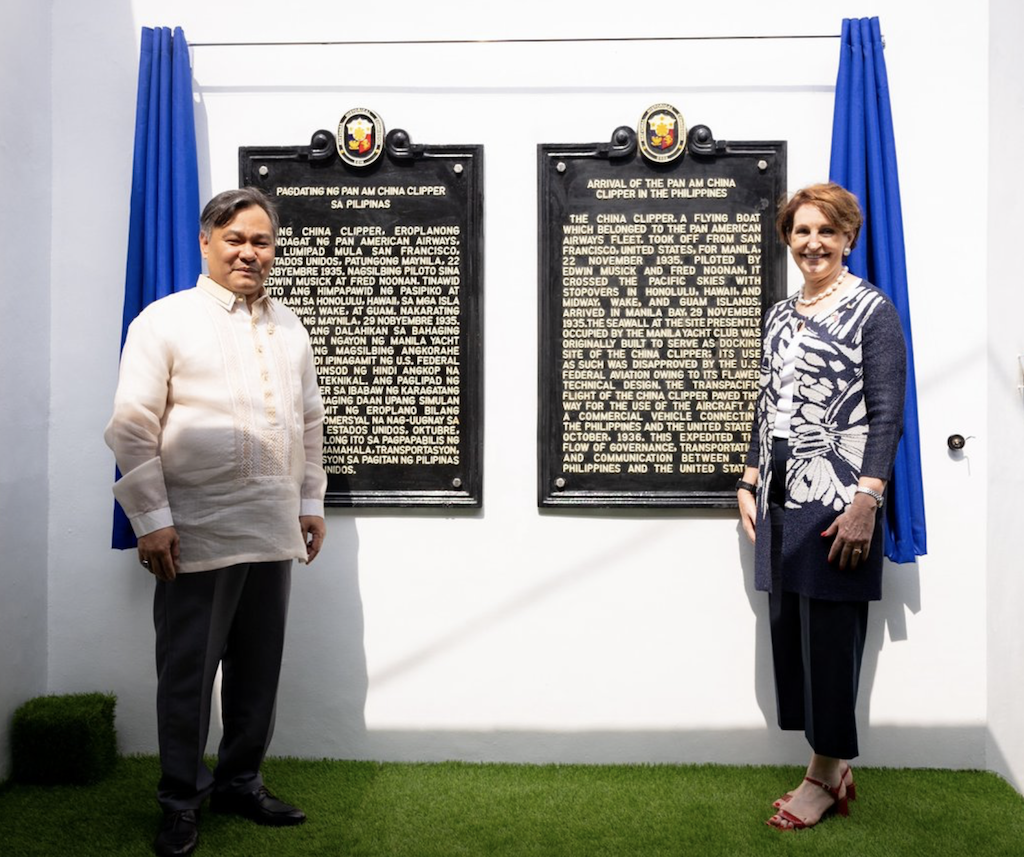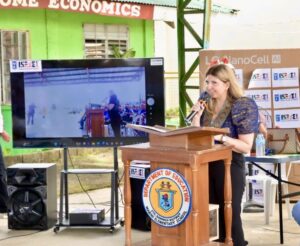
[Photo Credit: U.S. Embassy via @USAmbPH (X)]
United States Ambassador to the Philippines MaryKay L. Carlson and National Historical Commission Chair Emmanuel Calairo led on January 20 the unveiling of a historical marker, commemorating the arrival of the Pan Am China Clipper in the Philippines in 1935.
Recorded as the first commercial flight across the Pacific, “it laid the foundation for today’s continued modernization of aviation ties between the U.S. and the Philippines,” Ambassador Carlson said during her speech at the Manila Yacht Club.
The groundbreaking voyage from San Francisco to Manila took nearly 60 hours with fuel stops in Honolulu, Midway, Wake, and Guam before landing on the waters of Manila Bay, carrying mails and packages.
Nearly 90 years after, the Ambassador mentioned she helped United Airlines inaugurate in October last year its new flight between Manila and San Francisco that now takes only a little more than 12 hours – nonstop.
She also noted that in December last year, American Airlines and Philippine Airlines partnered on a limited codeshare agreement, launching the first flights by a Philippine carrier on domestic U.S. flights, offering travelers greater convenience and connectivity. This arrangement also allows American Airlines customers to travel to Manila and Cebu, opening more travel opportunities linking both countries.
“These recent advances in air travel build on the Martin M-130 China Clipper’s legacy and continue to accelerate opportunities for our citizens to thrive, share, and prosper as friends, partners, and allies,” Carlson cited.
In May last year, during President Ferdinand Marcos Jr.’s five-day official visit to Washington, D.C., both presidents agreed to expand air connectivity and modernize the bilateral aviation relationship. “This is exactly the type of momentum we need to further modernize our aviation ties, as we seek to upgrade our bilateral aviation agreement that is now forty years old,” Carlson stressed.
Further, she cited two American companies that are manufacturing aviation components for global markets in the Philippines. In Baguio, Moog employs more than 1,400 highly skilled Filipinos and has been an industry leader in manufacturing precision equipment for the newest aircraft across the globe. In Laguna, Collins Aerospace is expanding its manufacturing operations and currently employs more than 2,500 skilled workers.
“These are just two examples of how the strong partnership between the United States and the Philippines is making both of our countries more prosperous,” she said in closing.


